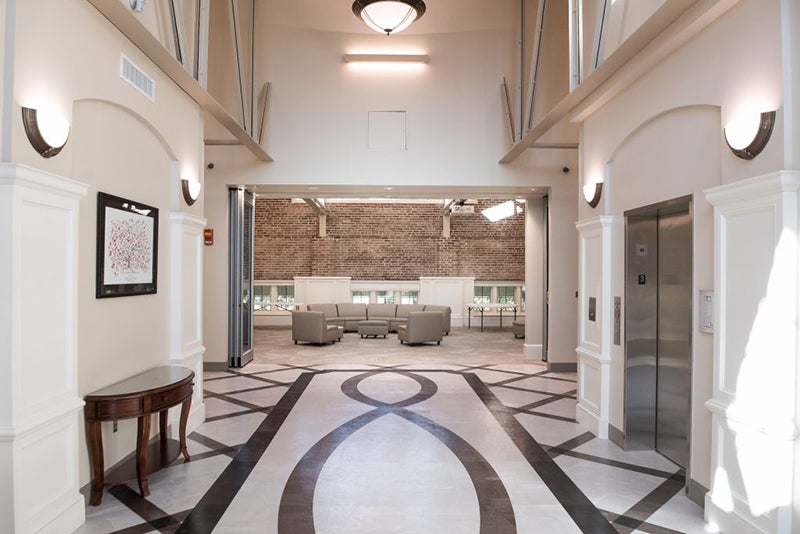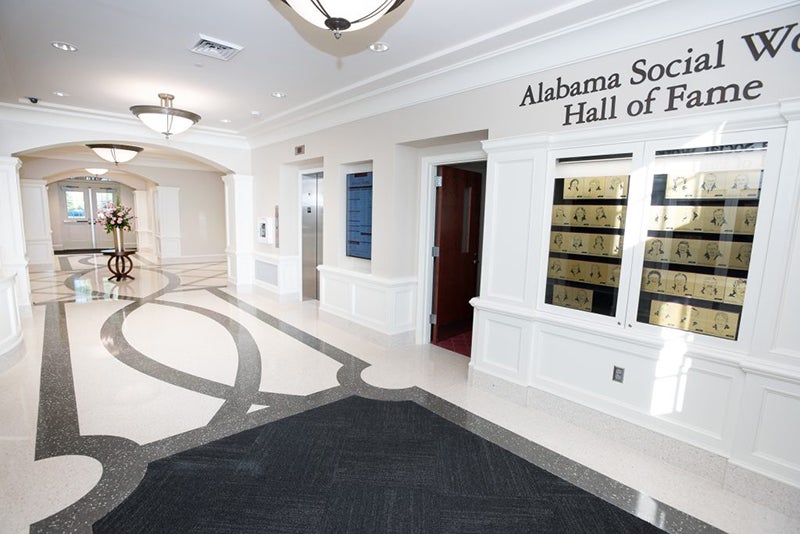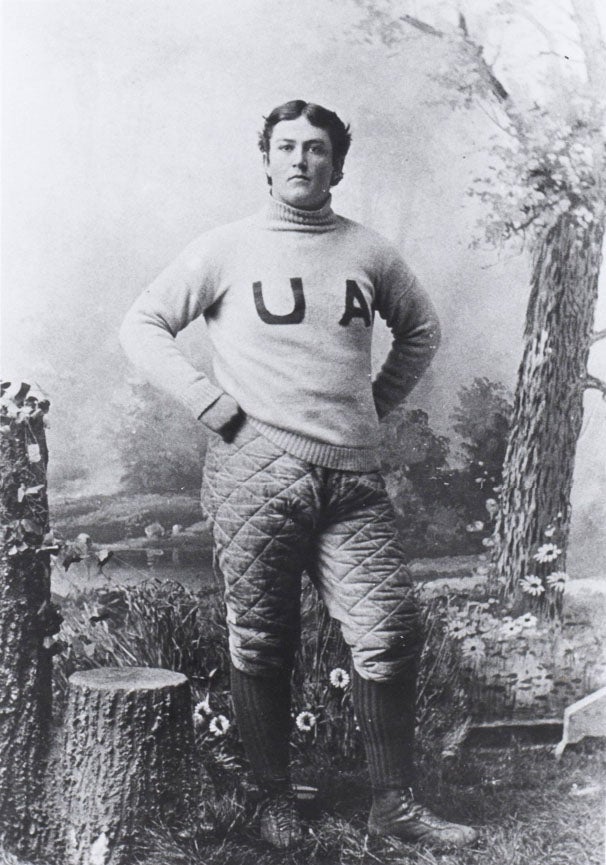Located in the heart of UA’s campus, Little Hall was constructed in 1915 as the University’s first stand-alone men’s gymnasium. Architect Frank Lockwood of Montgomery designed the building in a classical Revival style. After its construction, Little Hall was named in honor of William “Bill” Gray Little (1873-1938), a transfer student from Livingston who introduced football at UA in 1892. That same year, the University launched its first football team. In 1935, Little Hall underwent its first of many renovations.
The building was enlarged with the addition of a new building that would be known as the “Men’s Gym Annex” for 40 years until it was designated Moore Hall in 1975. In the mid-1950s, Little Hall was renovated to serve as an academic building for the School of Nursing.
In 1967, the University again renovated Little Hall, which faces University Boulevard and is just east of the President’s Mansion, to house the newly created School of Social Work and fit the specific requirements of social work education.

Inside Little Hall






Little Hall Then and Now

Little Hall is named for Livingston native William “Bill” Gray Little (1873-1938), a transfer student who came to The University of Alabama in 1892 and became the father of Alabama football. When he arrived on campus, Little began to teach students the game of football, which he had learned as a student at Phillips Academy-Andover. That year, the University launched its first football team with Little as the team’s captain. Because of this, Little Hall was named in his honor after its construction in 1915. The original Little Hall building was designed by Frank Lockwood, of Montgomery, in a classical Revival style and served as the University’s first stand-alone men’s gymnasium. The gymnasium housed rooms for boxing, wrestling, special exercises, trophies, lockers, baths, and a large main hall with galleries for spectators.
Architect Renderings of the New Little Hall
In spring 2016, the school began an ambitious renovation of its building, Little Hall. The $9.6 million project, which was completely funded by the school and university, transformed our 102-year-old building into a modern, state-of-the-art facility. The newly renovated building, is a hub for student life, teaching and research, as well as a gathering spot for social work alumni.